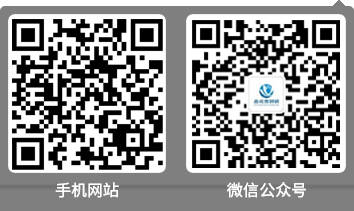新闻活动
15
2018
-
10
2016 Industrial Internet of Things and Big Data Technology Trends
Author:
The Motion Control and Motor Association outlines trends in several technologies including Industrial Internet of Things (IIoT), big data and predictive maintenance in 2016.
Today's technology trends are related to connectivity and access to information in a world that is increasingly connected. It's important to understand the trend of technology in advance. Technologies that manufacturers should pay close attention to in 2016 include big data, predictive maintenance, industrial IoT, and smart energy monitoring for transparent plant operations.
Safety supported production capacity
Safety-supported production capacity is one of the trends that manufacturers seek to extend beyond the protection of operators and equipment. Some companies are using safe speeds to make various operations prolific and achieve operational continuity by reducing frequent delays.
Sensor and predictive maintenance
Many smart components today use sensors for comprehensive state monitoring. The sensor includes a proximity sensor, a position or velocity sensor, a temperature sensor, a pressure sensor, an accelerator, and a current sensor. Status information transmitted by these sensors can be used for predictive and preventative maintenance. The comprehensive sensor data collected by the enterprise helps the system monitor when the device begins to wear or damage. Used in conjunction with interface devices that extract and send data for maintenance analysis, sensors can be significantly cost effective.
Big data and its role in the factory
Big data technology helps companies filter data streams, find useful information and help companies achieve beneficial results. Companies that make plans, identify problems they want to solve, identify the data they need, and make effective use of them will gain a competitive advantage. Big data also requires rigorous computing resources as well as information technology staff who understand the latest developments and trends.
Industrial internet of things
All the discussions led us to the Industrial Internet of Things and the value of the connected device market that is said to have 280 billion. Industrial IoT does not include sensors, smart moving parts, communication nodes, environmental controls, and other devices. The purpose of the Industrial Internet of Things is to reduce downtime, lead times, reduce inventory levels, simplify customer customization and increase efficiency.
Smart factory
Sensor connectivity, IoT connectivity, and the power of big data will continue to drive companies to mine data to foster actionable insights. This level of operational transparency will help make the decision to improve performance and increase profitability from the equipment operator to the entire management team.
Depending on the implementation, information can be obtained in a matter of minutes or even in real time. Management can view information such as operating equipment efficiency, throughput, and conversion time. Maintenance and system integrators can obtain parameters such as current consumption and load curve from the mobile phone.
Related News

